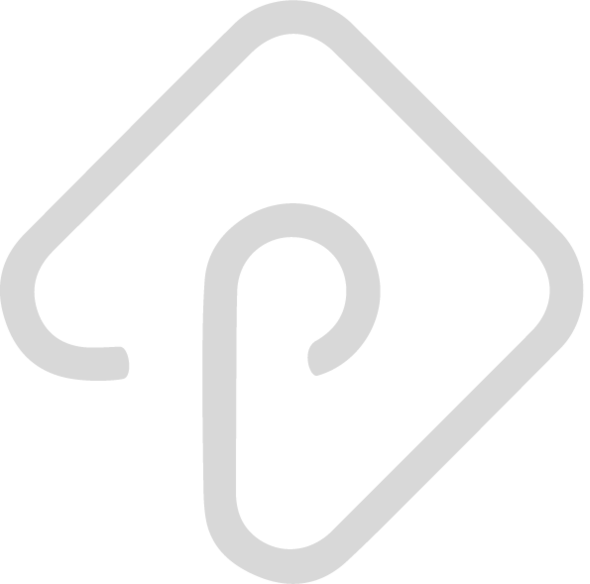Main Menu
Brand archetypes are clever, concrete ways to help customers understand and remember your brand. They aren’t something you’d tell your customers. They’re the solid foundation you can build your brand on.
Too many brands’ Key Messaging is simply made up of beautiful words. They sound good, sure. But they don’t actually say very much. That makes them hard to remember, hard to understand, and hard to connect with. They’re beautiful, but they aren’t working very hard to bring you sales, conversions, investors, or whatever your brand needs.
So before we create Key Messaging, we begin with Positioning.
Brand archetypes are one of the foundational principles of the P part (Position) of our PRISM process (Position, Reference, Interpretation, Story, Messaging). And they’re one of the very first elements you need to think about when you work out your brand’s market position.
Not every brand needs to be loveable. Some are an essential part of your work (these would be ingredient brands like the Intel chip inside your computer). Some challenge you (for example RyanAir). And some are more solid and stable (something like Caterpillar in the construction industry).
But every brand needs to be understood by its perfect-fit customers. If someone can’t quite understand what you do, they aren’t going to buy from you.
We see this a lot when giving Key Messaging workshops. “Our B2B brand doesn’t fit into the five archetypes because we’re a SaaS company” is a real life example of focusing on what you’re selling, rather than what your customers are buying.
Having a concrete archetype allows you to connect to the basic thing your customers are buying from you. They help you get the basics right before you hang all of your beautiful abstract words, logos and designs on top. Brand archetypes are the solid wall you need before you can hang up your artistic masterpiece.
Differentiation – it can be tricky to show customers why they should buy from you and not the competition. If you can get to the heart of what your customers are thinking while they’re using your product or service, you can develop your brand’s specific personality.
Clarity – it’s easy to over-complicate brand positioning. Brand archetypes help you distil your brand into its simplest component – how your customers interact with it, and what they think of it. This helps them understand what you’re selling and makes it easier for them to buy from you.
Consistency – anyone who writes or creates content for your business – from your sales team to customer service to marketing – needs to be speaking the same language. Creating brand archetypes helps your team reiterate why your customers should buy at every single customer touchpoint (even if it’s subtle).
If you want your audience to understand who you are and what you’re selling, you need to know who you are and what they’re buying. Concrete messaging is memorable and brand archetypes are a big step towards concreteness.
Your archetype is the foundation of your brand. It needs to run through everything you do, and everything you write.
Have we lost you? Have you read about the 12 brand archetypes and are now feeling completely out of your depth? Don’t worry, you can jump down to the 12 brand archetypes to see why we only use five (then pop back up here to find out more about the five).
If you’re thinking “Yes! About time someone dumped the 12. They were too emotional and there are way too many of them to be memorable”, read on, friend. If you’re thinking “I’m happy sticking with the 12 brand archetypes as I’ve always been taught”, give it a read anyway and contact us to let us know what you think.
There are three main reasons we use five brand archetypes:
1 – Concrete – meaning customers can actually remember them.
2 – Easy to understand – most of the first words babies say are nouns. That’s because they’re easy to understand, which is what Key Messaging is all about. If we boil brands down to their very simplest form, we win over customers and get them to understand what they’re buying from us.
3 – Put the focus on the customer – it doesn’t matter that you’re selling a SaaS tool. Your customer usually doesn’t care, and will very rarely think of a brand as a SaaS tool. They care what it’s doing for them.
Our five brand archetypes focus on the very foundations of what the brand is. They boil it down to its basic component and help you think about what your customers are buying, rather than what you think you’re selling. Unfortunately, there’s often a big difference.
This allows us to demonstrate exactly what the brand has to offer its audience. And, more importantly, what the audience thinks they’re buying from the brand. It also means we have to think a lot harder to make sure it fits into its chosen box. Once we have this decided, we can be much more creative with the branding we add on top.
Culture brands have strong values and a friendly culture that matters to employees and customers. They’re also authentic, fair, concerned with social contribution and building a community. When customers think of culture brands, they think of their people and the values they represent for us. John Lewis, for example, is an online shop and a physical retailer. But when we think of the company, we think of its friendly people and colleagues’ share in the profits of the company.
Agencies and professional service firms do well when they define themselves as culture brands. It’s hard to discern between different accounting practices, for example, if you don’t know a lot about the industry. But understanding that these are the types of people you’d like to do business with, culture-wise, is a great way to differentiate between them.
Culture brands are becoming increasingly common, and increasingly important. Over 82% of consumers think so and say they won’t buy from a brand if they don’t align with their values.
Examples of culture brands include: Patagonia and John Lewis.
Although it dropped this pledge in 2022 (and really, who could promise to beat any other deal in this age of cheap e-commerce?), John Lewis’ “Never knowingly undersold” promise is synonymous with the brand. It gets to the heart of the culture of quality, reliability and customer-centricity. It demonstrates their commitment to putting customers above profit and their long-standing history in retail. All of that in just three words! This is a brilliant example of Key Messaging built on the foundation of strong Positioning.
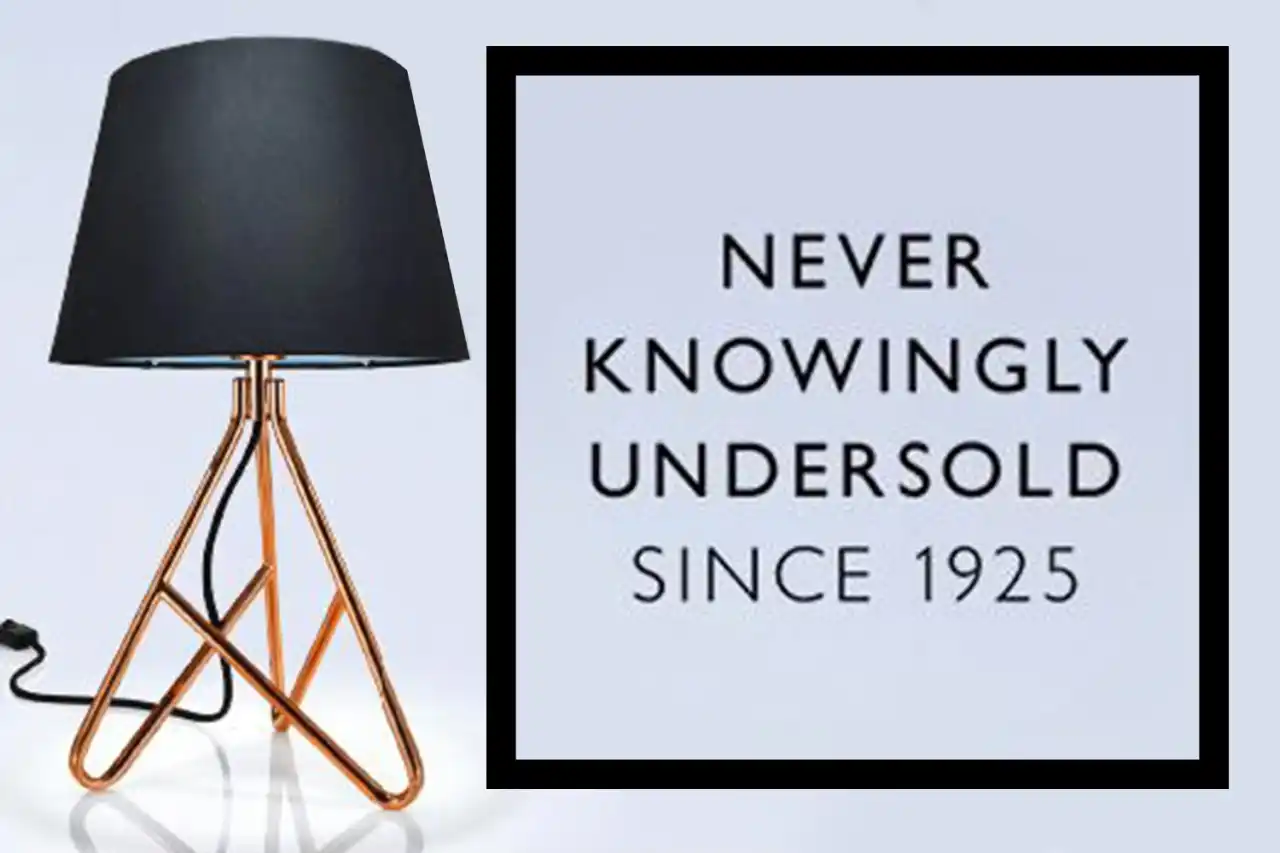
(Source)
From its beginnings, Buffer has placed a strong emphasis on building positive, inclusive work environments that prioritise employee wellbeing. A core pillar of their bold culture is transparency, which includes sharing revenues and salaries with the world. As a social platform, a strong focus on people makes sense and their ads usually come with pictures of joyful people. Their homepage messaging tells you how to use Buffer first, before stressing that they’re “a values-driven company… for ambitious people and teams.”

(Source)
I’ll use what is perhaps Patagonia’s most famous ad – “Don’t buy this jacket”. Launched for Black Friday in a world of cheap consumerism and fast fashion, it gets to the heart of the brand’s strong culture. Again, the culture is to put people and the planet above profit, and challenge the world of consumerism, despite being a business. And again – all of this was achieved in just four jarring words. 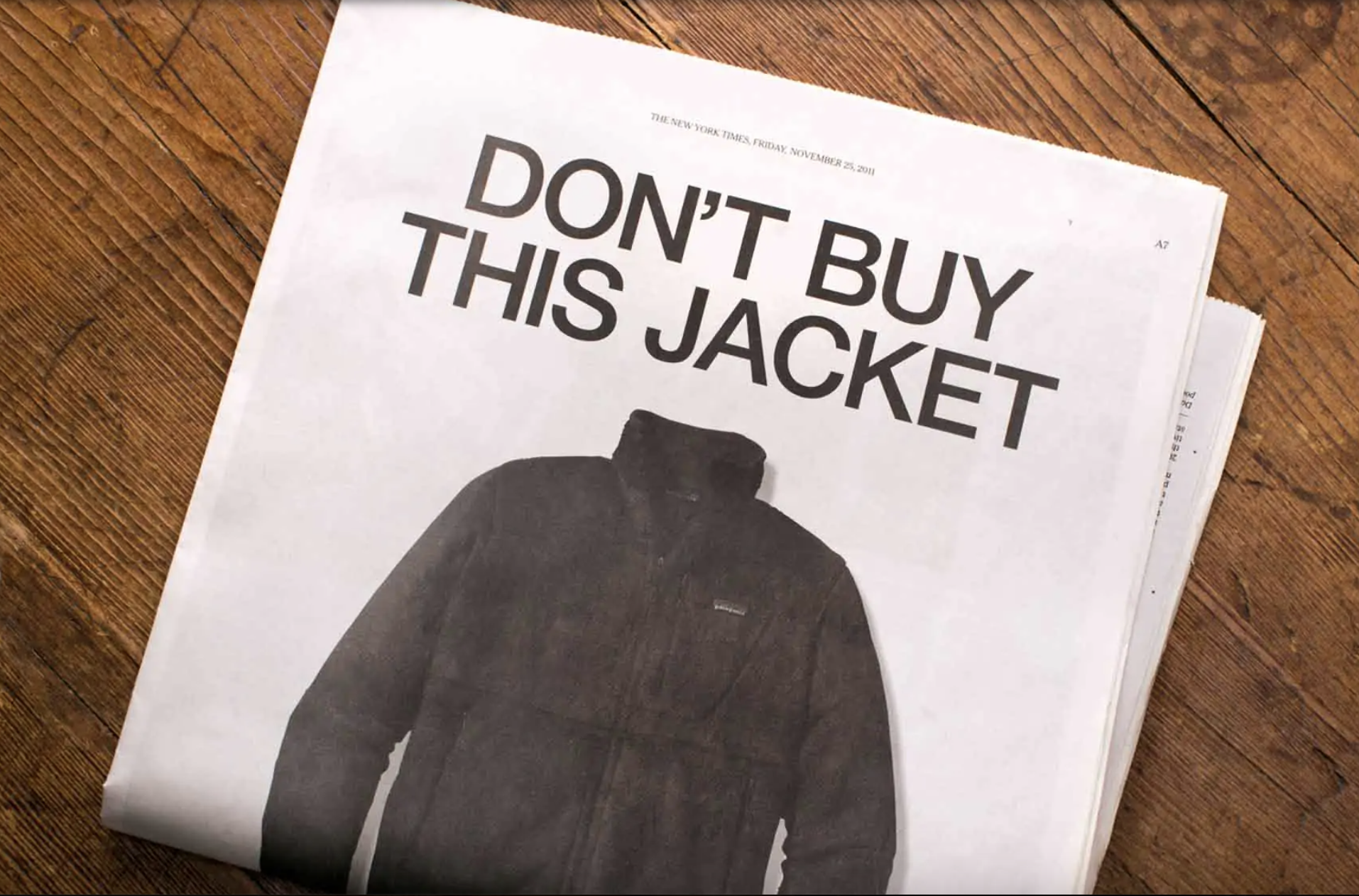
(Source)
Product brands sell, are associated with, or are a tangible product based on features. People relate to this brand in terms of price, function, and quality.
With product brands, the focus is on their functionality and features, which are all considered in relation to price. For example, a mobile phone brand like the iPhone is about ease of use and excellent features (think camera, speed, and compatibility with Apple’s other products), which come at a price. Conversely, Samsung’s phones are about integration with most other technology, a brilliant camera, screen size etc. This comes at a slightly lower price than Apple.
Products are perhaps the easiest type of brand to pick if you’re going for memorability. Something like a Mini car is all about being Mini in every single feature, creating a beautiful sense of nostalgia for the 90s every time you see or use one.
Examples of product brands include: BMW, Dyson, and Apple.
Your business card, leaflets and letters to customers aren’t something you want to scrimp on. Moo’s job is to create brilliantly designed and beautiful business cards and other printed materials for customers. It certainly isn’t the cheapest, and it isn’t the most expensive either. It’s where you go for good quality, a range of items, and luxury-looking printed ‘stuff’ for your brand. Moo is all about its products. Images of beautiful products sit centre-stage, there are no values on the homepage or landing pages, and the price is right there so you know how much you’ll be paying too. It’s a perfect example of a B2B product brand in action.
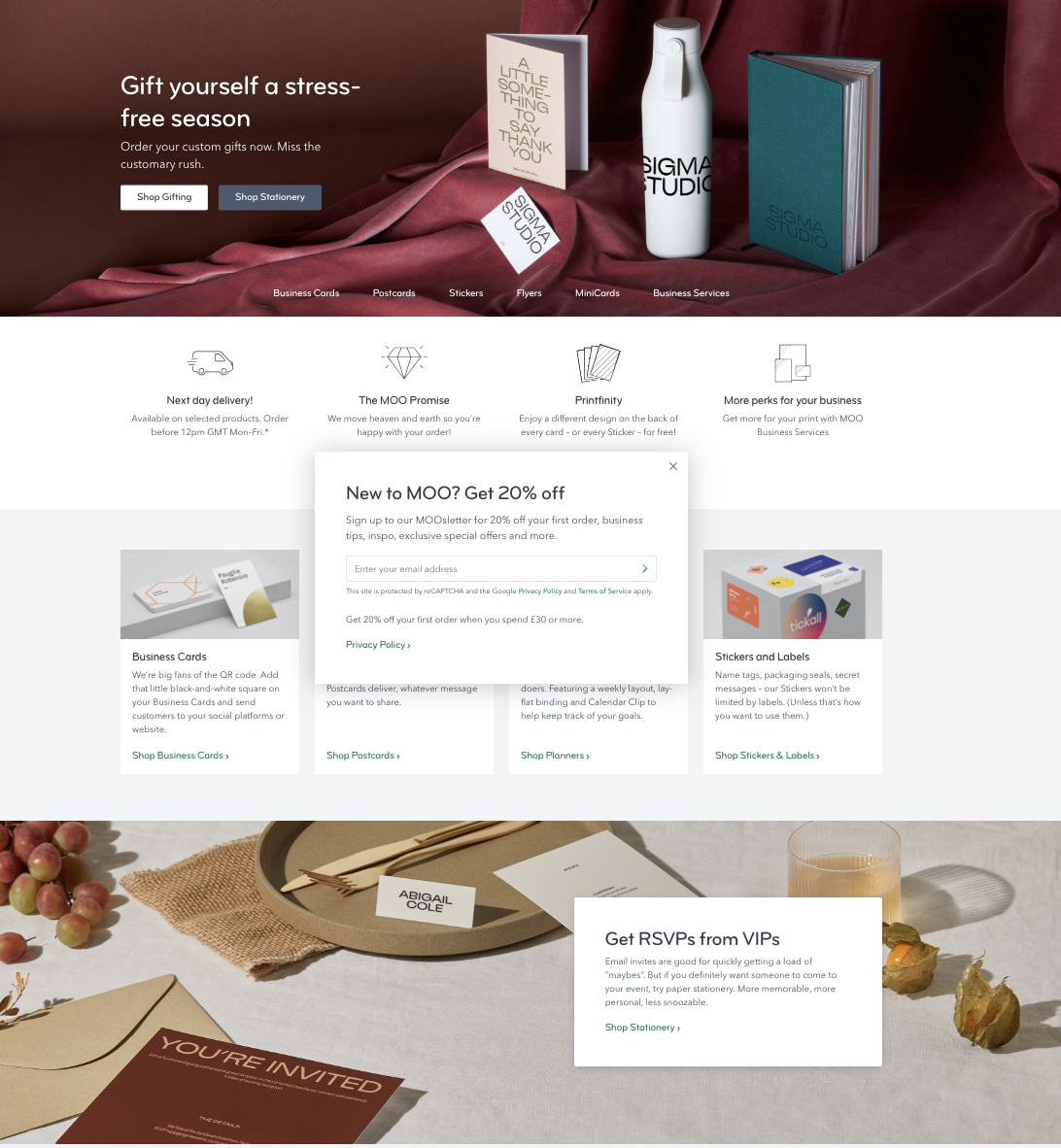
(Source)
Dyson famously focuses on building brilliant products that generate word-of-mouth marketing almost on their own. There’s some excellent personal branding from the Founder, Sir James Dyson, but innovation is the name of the game here. And what better way to demonstrate a product brand? Every single ad features the product front and centre, uses minimal wording and design, and often very tech-focused language customers wouldn’t use in their daily lives.
But Dyson say it best themselves when explaining their new product innovation process.
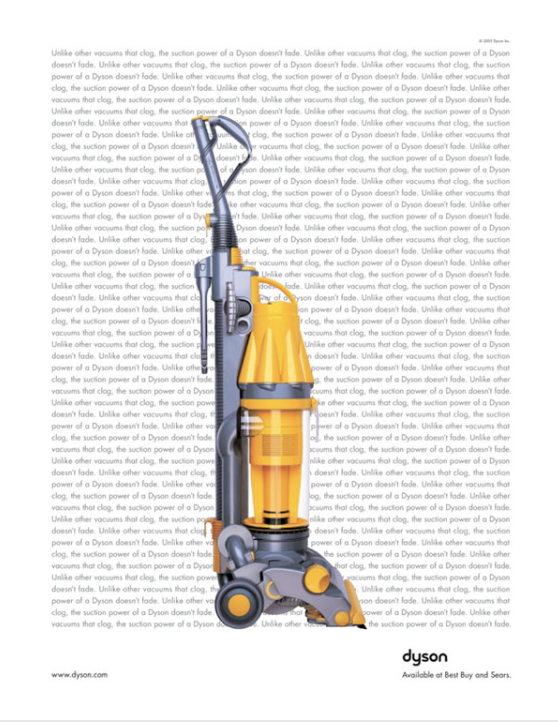
(Source)
Apple’s slogan is all about product and innovation, so we’ll begin there. “Think different” is a call to arms for people who want to be early adopters. Those who want to stand out from the crowd. Those who want the latest innovation, not dinosaur technology. Even though mac’s share of the PC market is now around 25%, it still feels like buying a mac is different. This clever slogan is also a shortcut to Apple’s internal focus on their products – building things better, differently and iterating more. It’s a perfect example of a product brand’s Positioning in action.
(Source)
An ingredient brand only exists in partnership with other brands. Something like Intel is an ingredient brand – computers can’t run without it, but it also wouldn’t exist without computers. The idea goes way back – think supermarket shoppers only buying desserts that contain Canadian Maple Syrup, or sauces with San Marzano tomatoes from Italy. Many ingredient brands go undetected. For example, not many of us have heard of YKK despite them making about 50% of all zips ever made. In the world.
The most important feature of an ingredient brand is that it makes the host brand more powerful when it’s included. Customers are likely to pay more for the product, service, destination, or culture brand when the ingredient is included. Although not the first to do it, Intel is perhaps the best example of ingredient branding, and offers some interesting thoughts here.
Examples of ingredient brands include: Intel, Bluetooth, and Gore-Tex.
Intel is in an ideal position. They’re needed to make PCs work – and we all know it. Most ingredient brands spend time marketing to their B2B customers, making more sales and growing away from the mainstream. But not Intel. Their ads are for the masses too. They help us all understand that without Intel our computers wouldn’t work as well. They’re strongly positioned as the thing inside our PCs that make them work. They might not be the attractive hardware, but they are the thing that brings us all of the applications we use. That’s why we’ve heard of them.
Positioning itself as an ingredient brand, yet staying top of mind when it comes to consumers, is a clever tactic. It means more B2B clients will buy Intel because they know consumers care (even if they don’t fully understand why). Ever seen those blue stickers on a laptop which say “Intel inside”? Way more powerful than most ads.

(Source)
Relatively unknown to those of us who don’t operate an airline or build aircraft, Honeywell Aerospace provides essential components and systems integrated into the manufacture of aircraft. These include systems for communication, navigation and monitoring, weather radar systems, engines and other vital components. Their advertising speaks directly to their role as an ingredient brand, talking about helping other companies ‘evolve operations’, and showing beautiful images of aircraft to indicate the bigger picture they’re a part of. Imagery is all about precision and flight, as shown in their previous messaging “Honeywell Aero has a way with flight”.
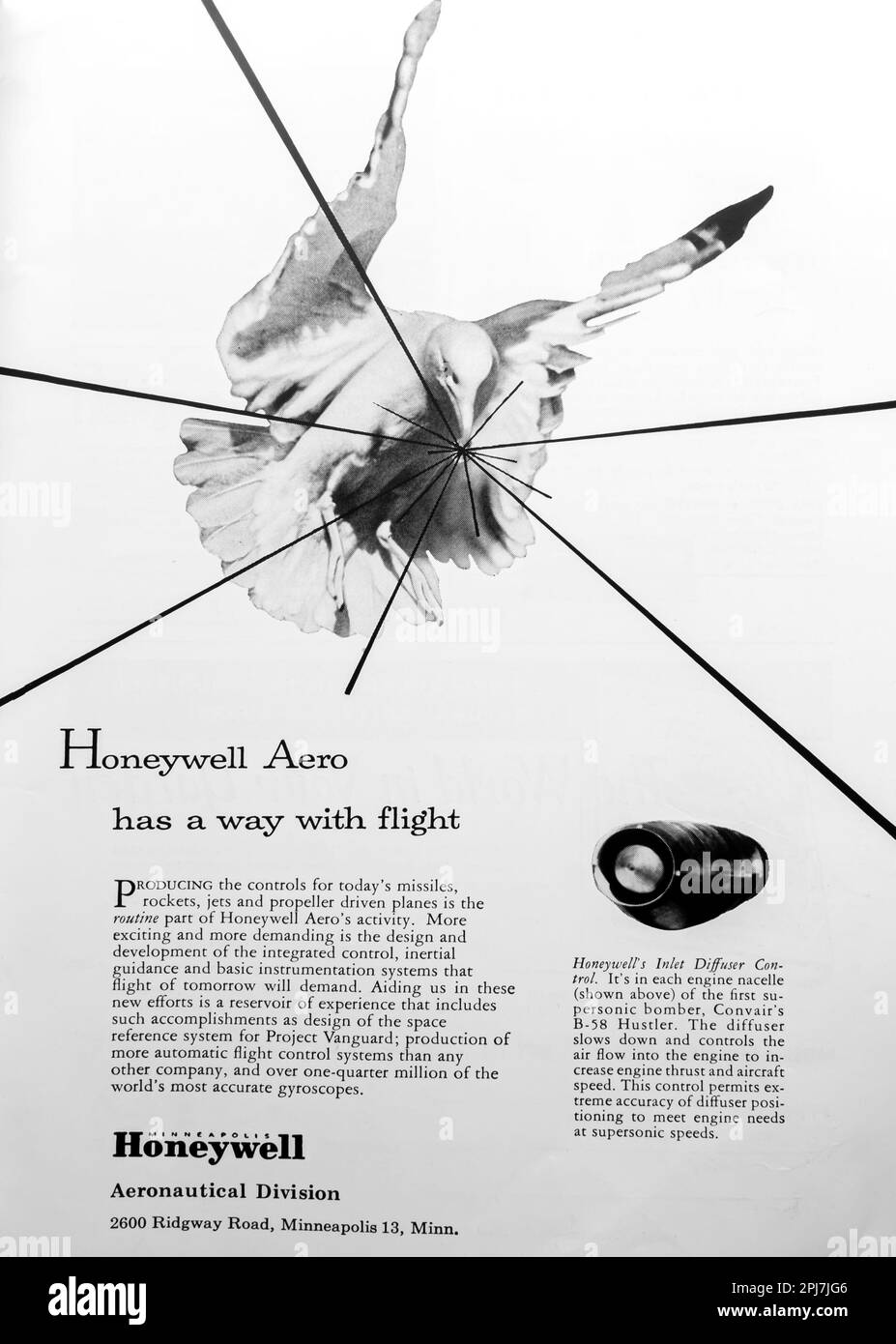
(Source)
Gore-Tex is a brilliant example of an ingredient brand. It’s a well-known brand name and many consumers believe their outdoor clothing just wouldn’t be the same without it. In their ad “We test the limits of life” (video above), they cleverly weave each of the items needed for running outdoor tracks, climbing mountains, or (strangely) sitting on top of a building taking photos while enduring the rain and cold. Any clothing items you need to test your limits contains Gore-Tex. And Gore-Tex is needed to enjoy most limit-testing experiences.
Destination brands are associated with a place. Somewhere you have to go to consume the brand. This could be a physical or virtual place, the important thing is you mainly experience the brand there.
A helpful way to think about positioning a brand as a destination is to try to get customers to answer “Where do you go to ___?” with the brand’s name. For example, “Where do you go to network with others online?” LinkedIn. Or, “Where do you go to find the answer to something?” Google.
Destination brands promise an experience that is usually something new or different. For example, Third Space offers a fitness space away from it all, where you just focus on you. Tourist boards like New York City bring you new experiences around every corner, and Disneyland is perhaps the greatest experience brand in the world, offering a completely immersive destination experience.
Examples of destination brands include: Starbucks, Disneyland, and LinkedIn.
The famous annual conference/festival is a master in all things destination branding. It’s the logical choice, due to its location in Austin, Texas, which has only recently been known globally for its conferences and events. Its logo – an arrow – says it better than we could. No symbol points to a place (no pun intended) better – the arrow forms a shortcut to the community built around the festival, pointing out its lively schedule of events and the fascinating ideas that come out of it.

(Source)
Disneyland’s well-known slogan – “The happiest place on earth” – describes, in five words, its archetype as a destination brand, its position as the ultimate theme park, and its function in creating a magical experience like nowhere else. Its logo is a castle with a shooting star over the top – demonstrating its destination archetype (as well as the magic of Disney).
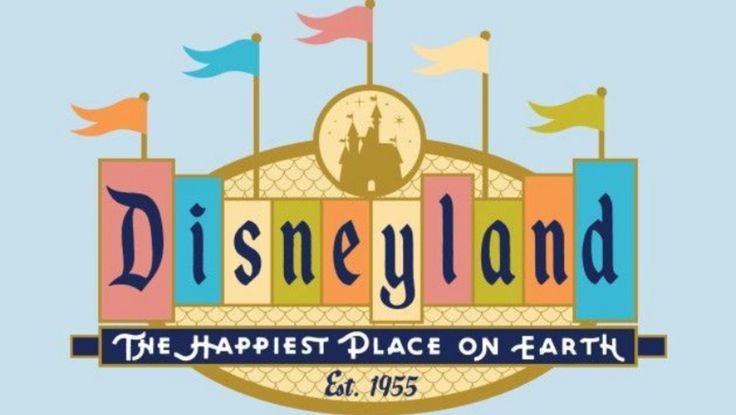
(Source)
Google is very good at positioning its search engine as a destination brand. So much so that way back in 2020, 65% of searches ended in no clicks (meaning visitors stayed on the Google search page, rather than clicking through to another website). Their “most searched for” ads reflect the simplicity of the search page – just a blank box to type your query into. They pique your interest and create more questions that you really won’t be able to answer until you go to google.com. Plus, they’re aligning themselves with the greatest musicians, astronauts and speechmakers in the world; they’re telling you they know the most searched for terms because they have the largest market share, and they’re creating a sense of community out of something we tend to do individually.
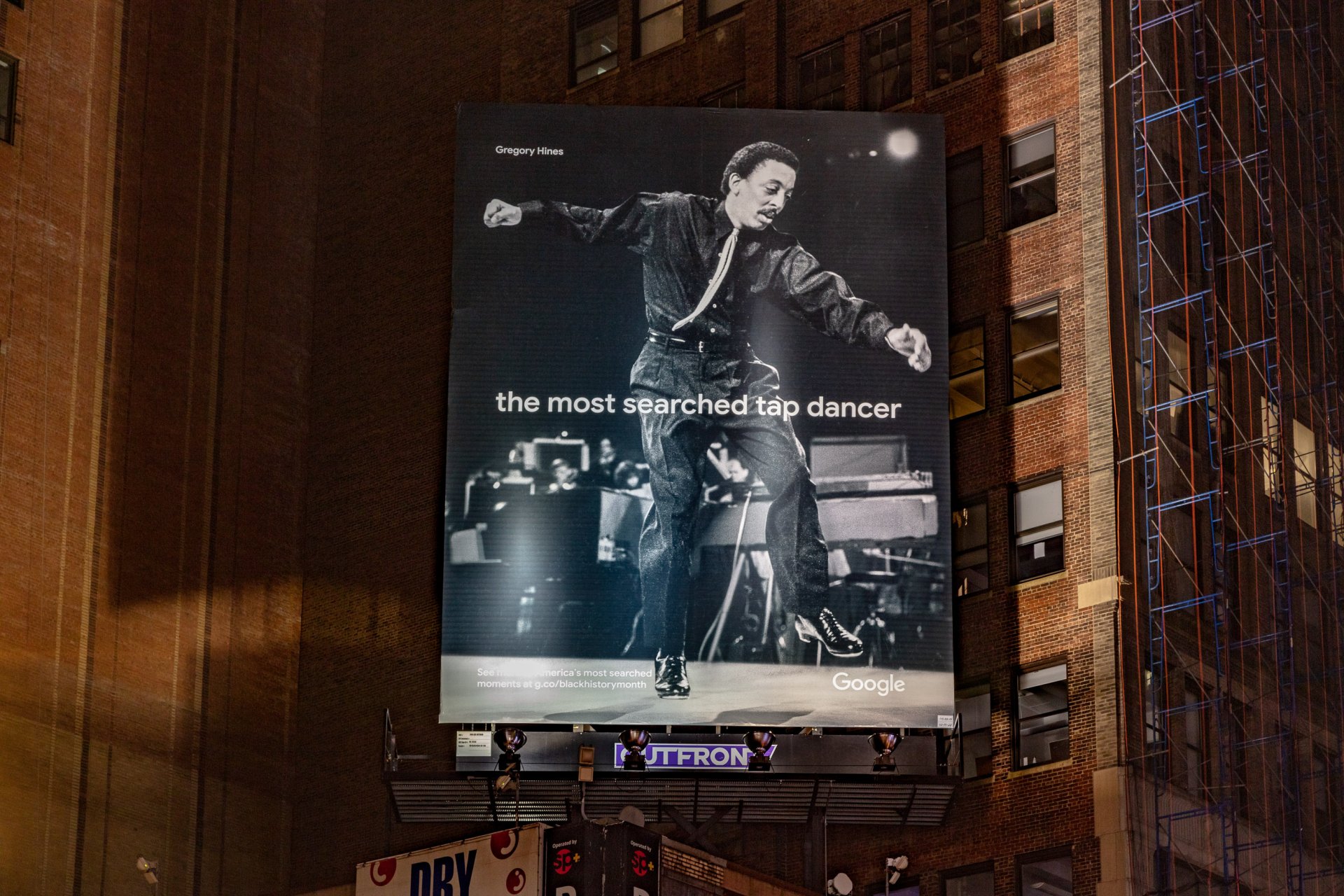
(Source)
Service brands are often closely tied to an identifiable personality (e.g. Tony Robbins) or the company of people delivering the work.
It can be more difficult to make service brands memorable. We can’t see or touch a service, so it’s harder to remember it or see the value in buying it. Audiences default to thinking of the brand in terms of its people (rather than functionality, features and price, as they do with a product brand). Technology service brands tend to be able to escape this problem, because they aren’t dealing with a person when they interact with the brand.
Examples of service brands include: agencies, and Fedex.
Hotels are often thought of as destination brands. But consumers usually book their hotel based on the experience, or the people, rather than its location. They’ve already chosen their location, and the next step is usually choosing a hotel in that place. Nobody understands this better than Ritz-Carlton.
They differentiate themselves using their brand archetype – service. Take their “Let us stay with you” campaign as an example. The word “us” is key here – it reminds you of the staff who are here to cater to your needs. They bring it back to the whole team, mentioning the staff who bring you a drink by the pool, the people who designed your bedroom, and the hotel team who go above and beyond to make your holiday an experience. Location is a key component, but the relaxation and luxury feel are created by the service archetype.
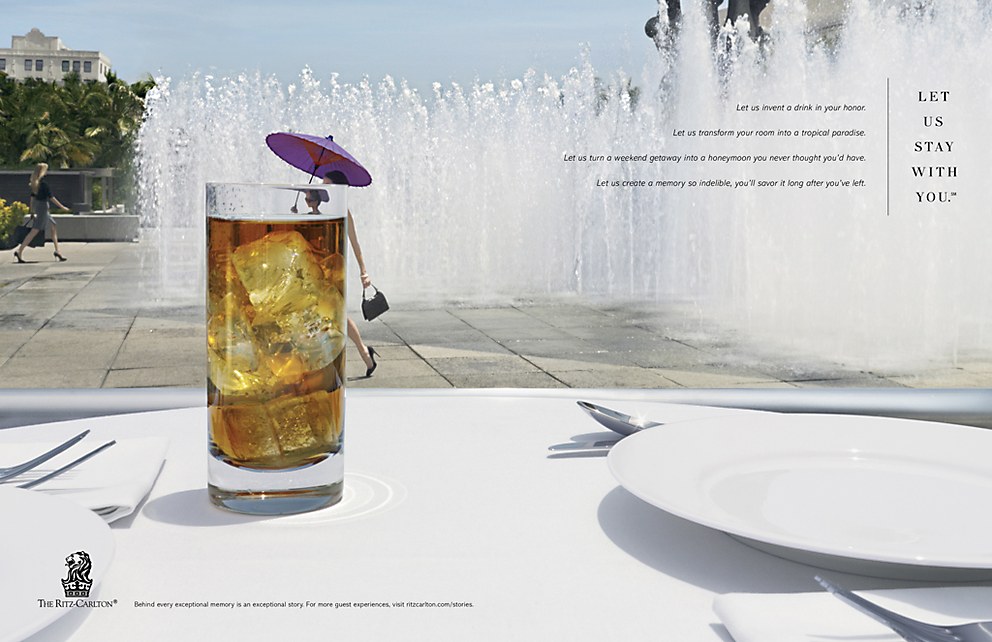
(Source)
Management consulting firms revolve around their processes and their people. McKinsey understands how to put their people front and centre in every ad to hammer home the fact they’re a service brand. Despite the fact that “unique” is one of our brand swear words (overused words that brands should never use if they want their content to mean anything), this ad gets to the heart of the matter. “We deliver” brings us right back to the people who work behind the scenes to bring us content insights, and later on (if we can afford it) management consulting.

(Source)
Virgin Group brings us holidays, experiences, mobile, broadband, an airline and much more. But importantly they all have two (very obvious) things in common. The colour red and Richard Branson. His personality is infused in the Virgin brands, which are brave, innovative, and bold. Airline ads feature him dressed as female cabin crew, Virgin Trains feature Branson posing as a train worker, and Virgin Galactic is a PR machine.
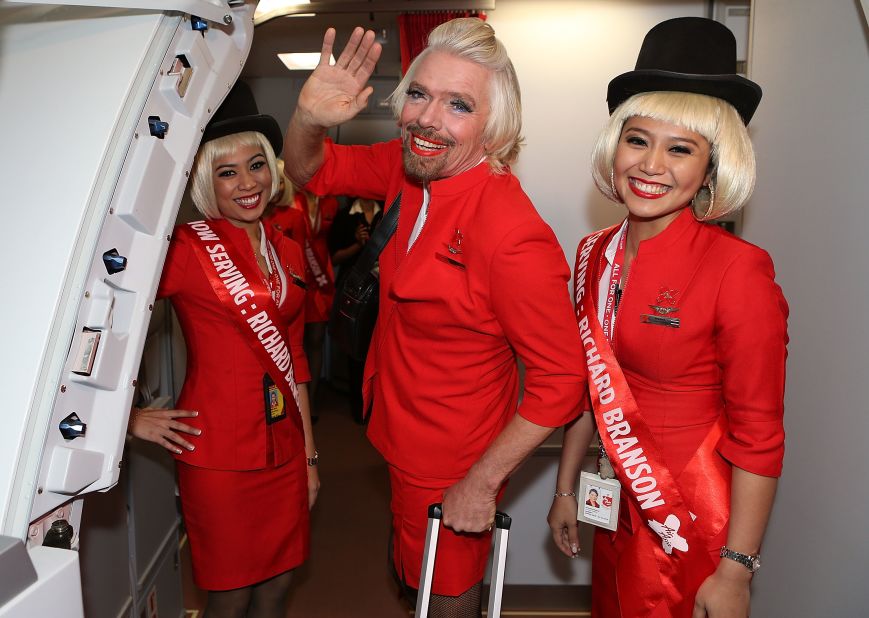
(Source)
Many brands can fit into most or all of the five categories. It’s about finding which one the customer thinks you are.
Let’s use HubSpot as an example. I recently received an email from them, saying I could only contact them about emergency situations because their whole company takes a week off each year for a proper break and to avoid burnout. That makes them a culture brand. I use their CRM and other tools instead of an Excel spreadsheet and a million other tools, so I interact with them as a product brand. I only use their CRM and other tools on their website, which makes them a destination brand. And I can go to other websites and link up HubSpot and use it that way, which makes them an ingredient brand.
But which do I think of the most when I think of HubSpot?
When I talk to people about HubSpot it isn’t their company culture or website that really matters to me. It’s the product they provide – their CRM, analytics, marketing tools etc. that I actually care about. This makes them a product brand.
Previous brand thinking says there are 12 brand archetypes. But using this many makes things complicated for customers to understand. The 12 brand archetype theory is based on Carl Jung, who suggested these were the 12 types of personalities that humans could understand and remember.
Because Jung’s archetypes are based on human personalities, they become abstract and are tricky to base your brand on. They over-complicate the branding process, and make it less concrete and more creative. Creative is brilliant, once we get to the Key Messaging stage,but for the Positioning stage we need something that is simple to explain and build a business on (although that doesn’t mean it’s a simple thing to get to).
The problem with these archetypes is that they just aren’t concrete enough. They’re based on personalities, which are important for brands, but not the very foundation of who they are. You’ll often see branding people speaking about the 12 archetypes but having to use a person to demonstrate the characteristics. That shows why this concept is failing us.
This list of 12 also focuses on B2C companies – when you search for examples of B2B brands in each of the categories you begin to feel like you’re shoe-horning them in. Plus there’s really no difference between how customers interact with B2B and B2C brands. The topics they talk to customers about, the mediums they use to do it, and the buying journey might be slightly different, but essentially they’re the same.
Treating the foundations of B2B branding differently to B2C is suggesting that the same people who buy software, services, tech or deep sea drilling for a company don’t also want to buy beauty products, clothes, groceries, and holidays.
They have essentially the same emotions, connect in similar ways, have the same levels of understanding and want to interact in a similar way when buying B2B or B2C products.
The Magician brand archetype is an innovator and revolutionary. They challenge the status quo and make dreams come true.
Brand promise: All of your dreams will come true.
Examples of Magician brands: Disney, TEDx, Coca-Cola.
The Hero brand archetype wants to save the day and make the world a better place. They’re known for their bravery and commitment to taking action.
Brand promise: We can make the world a better place.
Examples of Hero brands: Nike, Duracel, The Red Cross.
The Outlaw brand archetype is a non-conformer who wants to shake up their industry or society as a whole.
Brand promise: We can set society free.
Examples of Outlaw brands: Virgin, Harley Davidson, Uber.
The Lover brand archetype is a romantic who adores their customers, experiences and surroundings.
Brand promise: We will make the world beautiful.
Examples of Lover brands: Chanel, Haagen Dazs, Victoria’s Secret.
The Jester brand archetype is young at heart and never takes life seriously. They’re the optimistic life and soul of the party.
Brand promise: I will brighten your day.
Examples of Jester brands: Skittles, Ben & Jerry’s, Dollar Shave Club.
The Ruler brand archetype takes control, has an authoritative presence and provides a role model for everyone.
Brand promise: You are successful in work and life.
Examples of Ruler brands: Rolex, Apple, American Express.
The Caregiver brand archetype is selfless. The priority is to care for others and protect them. They aren’t afraid of the truth and will highlight and solve the world’s problems.
Brand promise: We can protect everyone through love.
Examples of Caregiver brands: Toms, Dove, Unicef.
The Everyman brand archetype is a regular guy, just like you and me. They’re your comforting buddy who just gets you and promotes the virtues of being an ordinary person.
Brand promise: We can all belong.
Examples of Everyman brands: Budweiser, McDonalds, Tesco.
The Explorer brand archetype is a free spirit who wants to explore the world to its most remote depths.
Brand promise: We can adventure the world together.
Examples of Explorer brands: Land Rover, The North Face, National Geographic.
The Sage brand archetype is interested in gaining knowledge and imparting their wisdom.
Brand promise: Lifelong learning is the path to wisdom.
Examples of Sage brands: BBC, University of Oxford, Google.
The Innocent brand archetype is positive and optimistic. This brand is a dreamer who invites you into their idea of a better future.
Brand promise: We can live a wholesome, pure and simple life.
Examples of Innocent brands: Aveeno, Dove, Fairy.
The Creator brand archetype is inventive, artistic and possibly dreamy. They like to introduce new thoughts and ideas into the world. Something that didn’t exist before.
Brand promise: We can create what we imagine.
Examples of Creator brands: Tesla, Lego, Adobe.
There’s no simple answer to that question. The first step is to listen to your perfect customers and speak to your sales and customer service or account management teams, along with anyone else in the business who speaks to your clients every day.
Next, you need to stress-test your brand archetypes. Is the wording your customers use related to a product, service, place, person, or another business? Where and how are they buying what you offer?
Try to take your preferences out of the process and really listen to what they’re saying. This can be tricky, and most companies don’t get it right.
You might need an expert – speak to our team and we’ll show you how to get it right.
Or, take our Key Messaging quiz to find out how well you’re doing.

We are powered by writers and business people, with a sprinkle of AI and a healthy dollop of clever processes.
Get our lovely jubbly tips and tricks and useful writing licks:
